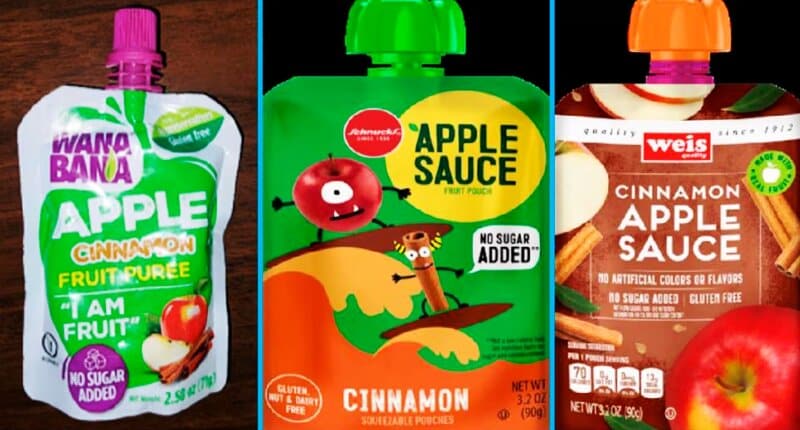According to the Food and Drug Administration, apple puree pouches that were recently recalled owing to severe lead poisoning presumably harmed more children.
The agency has received 52 reports of increased lead levels in children who allegedly ate the products, an increase from the 34 instances recorded last week. According to the FDA’s online investigation update, the reports span 22 states and involve children aged 1 to 4.
The pouches were sold to parents and children under three brands: WanaBana apple cinnamon fruit puree, Schnucks cinnamon applesauce pouches, and Weis cinnamon applesauce pouches. Supermarket stores like Dollar Tree and internet sellers like Amazon offered them.
The FDA stated that it is still collaborating with Dollar Tree to remove the recalled products from store shelves in many states.
WanaBana apple cinnamon fruit puree pouches, Schnucks-brand cinnamon-flavoured applesauce pouches and variety pack, and Weis-brand cinnamon applesauce pouches are among the three recalled applesauce products.
According to the agency, “This product should not be available for sale, and consumers should not purchase or consume this product. Also, parents should dispose of the pouches by pouring the contents into the garbage and discarding the packing.”
The FDA stated on Wednesday that it is working with the Centers for Disease Control and Prevention to determine the source of the contamination. The agency indicated that cinnamon shipped from an Ecuadorian company was the “likely source” of the lead contamination.
Lead exposure can cause significant behavioural and learning issues. According to the American Academy of Pediatrics, heavy metals such as lead can enter food products through soil, water air, or industrial processes.
There is no safe amount of lead exposure, but the CDC uses 3.5 micrograms per deciliter as a marker to identify children who have higher levels than usual. The affected children’s Blood lead levels varied from 4 to 29 micrograms per deciliter.


